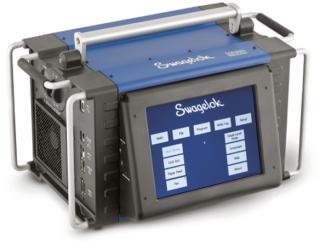Voices of Biotech
Podcast: MilliporeSigma says education vital to creating unbreakable chain for sustainability
MilliporeSigma discusses the importance of people, education, and the benefits of embracing discomfort to bolster sustainability efforts.
July 1, 2009

Orbital welding has long been the most popular and accepted method for joining 316L stainless steel tubing within the bioprocessing and pharmaceutical sectors. Yet as requirements for orbital welding continue to expand, so does the need to select a system that will pay dividends in more ways than one. Recent advancements in small, portable inverter power supplies help improve the consistency and reliability of welds as well as operator efficiencies.
Open Platform Design
To enable optimal efficiencies, a power supply must be designed with an open platform that allows an interface with standard devices and the ability to expand as technology evolves. Today’s power supplies control aspects of the welding process that historically would be undertaken manually, such as travel speed, arc gap, and gas flow. This automation minimizes many variables that can lead to errors or defects and enables welders to focus on overseeing the process and completing welds. The result is a more efficient and streamlined process that enhances productivity, weld consistency, and quality.
User-friendly systems provide step-by-step procedures to create orbital weld programs for a variety of tube diameters, wall thicknesses, and base materials. By selecting a preset program or creating one by selecting data from dropdown menus, operators can reduce the chance for human error and shorten start-up time. Some newer orbital welding systems have integral USB ports that enable operators to plug in a keyboard or mouse for easier data entry.
Weld documentation is a critical requirement throughout the ASME-BPE standard. Traditionally, this process is costly and time consuming, requiring operators to maintain detailed, written weld logs. But today, orbital welders can store data that can be transferred to databases for analysis and reporting.

Weld Quality
The automated orbital welding process is highly controlled to help achieve weld repeatability and consistency. Advancements in gas control help with weld consistency and operator efficiency. Automated orbital welding generally uses the GTAW process, which requires a shielding gas fed through the weld head to protect the electrode, molten weld puddle, and solidifying weld metal from atmospheric contamination. Newer orbital power supply designs feature automatic shield gas control. Older systems require the use of a manually controlled flowmeter that must be adjusted for different welds, allowing the possibility of human error. Systems with automatic shield gas control eliminate the possibility of negatively affecting weld quality due to an incorrect setting.
Power Considerations
Newer power supplies with higher power outputs are capable of welding small tubing as well as the larger diameter and heavier walled tubing and/or piping while maintaining consistent welds.
Portability and Accessibility
Small, lightweight orbital welding systems can be moved easily from one job site to another. Remote controls and detachable weld heads and fixtures allow joints to be prepositioned and enable orbital welding to be conducted in hard-to-reach places. There only needs to be enough clearance for the weld head to make a full 360-degree orbit around the tubing.
Orbital Welding Value
The selection of orbital welding equipment can play a vital role in meeting the ASME-BPE standard for welding requirements, and can also have a direct effect on achieving compliance in the most cost-effective, efficient, and productive manner.
You May Also Like